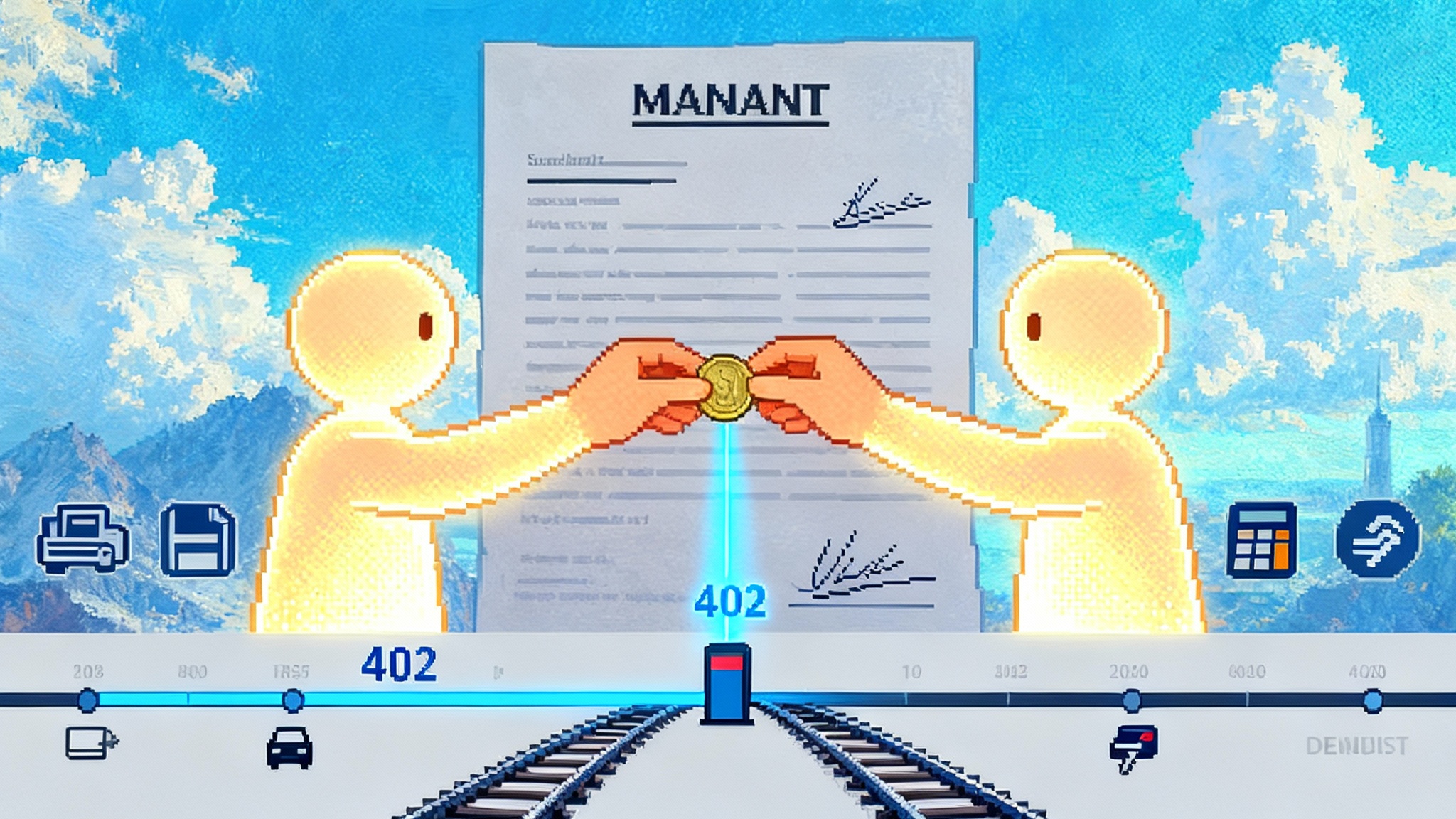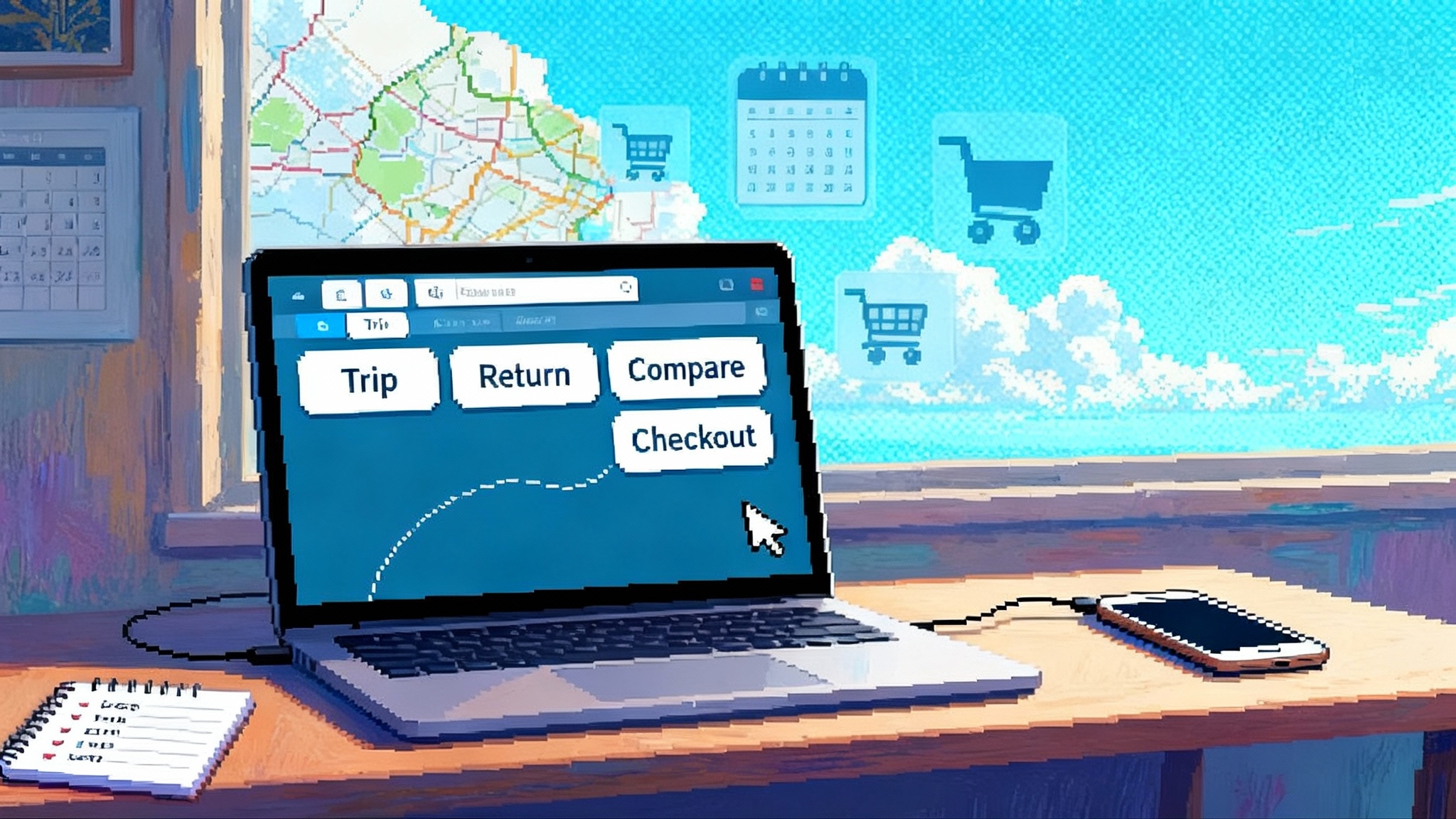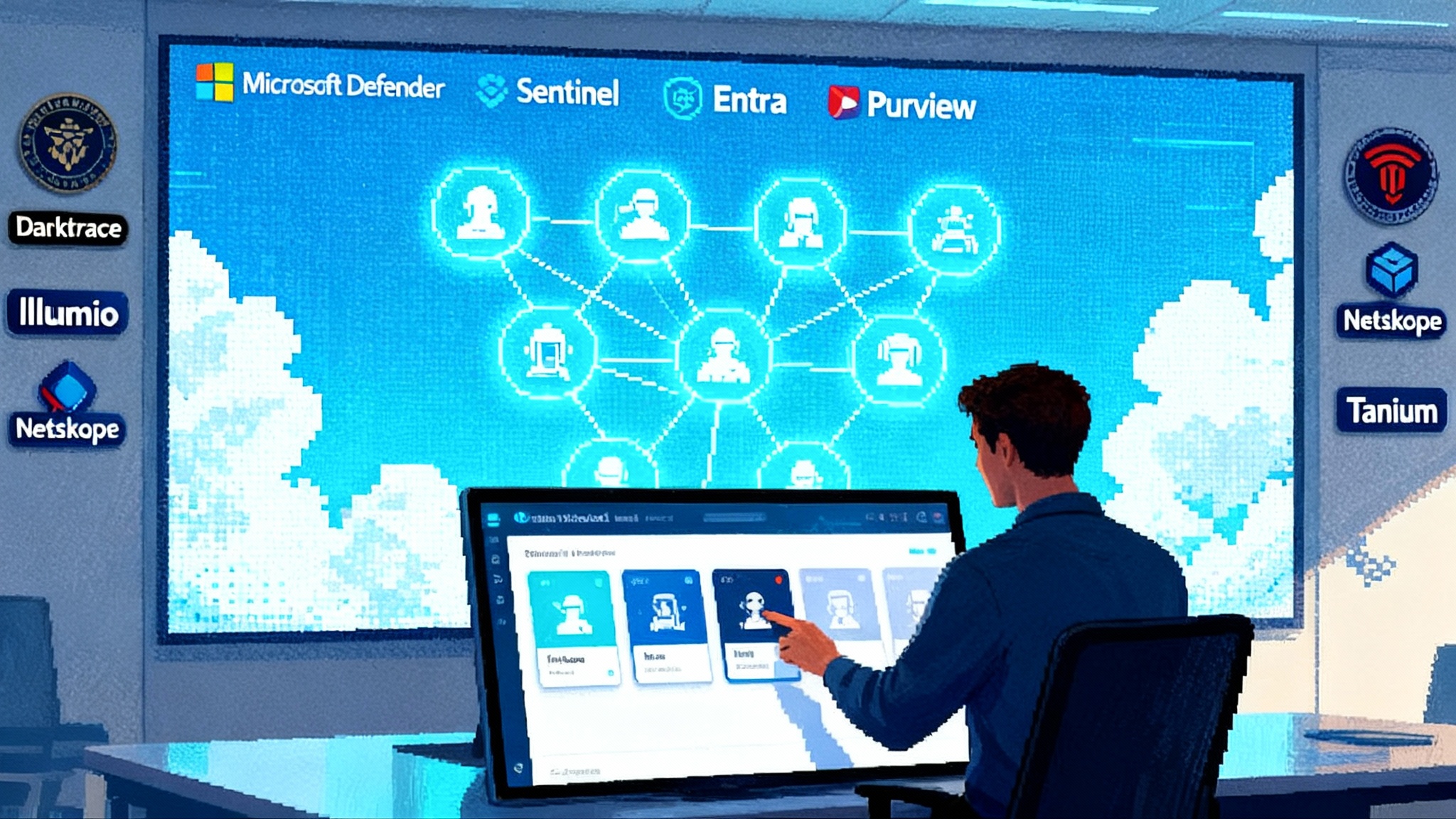AP2 and x402 Flip the Switch on the Agent Economy Now
Google’s Agent Payments Protocol (AP2) and Coinbase’s x402 make agent-to-agent payments practical, unlocking pay-per-action APIs, autonomous procurement, and machine-native pricing. Learn how design patterns change, what to build now, and why adoption will accelerate in 2026.

The week software learned to pay
Two announcements just turned a long-running thought experiment into an engineering plan. Google introduced the Agent Payments Protocol, a shared rulebook for how agents prove authority, get authenticated, and pay across many rails. Coinbase launched x402, a simple way to do stablecoin payments over the web’s own request and response cycle. Together they move agents from tools that talk to programs that buy.
If you want the headline in one line: AP2 defines trust and accountability for agent purchases, while x402 makes microscopic, instant payments over the internet routine. AP2 gives merchants and networks confidence that an agent is allowed to act. x402 gives agents a way to settle for exactly what they used. Combine the two and you get pay-per-action APIs, autonomous procurement, and machine-native pricing that finally feels native to the web. For broader context on agentic transactions, see agentic commerce is here.
Early days or not, you can already design for this. Let’s walk through the mechanics, then the design changes, then a concrete build plan, and finally how multi-agent markets will accelerate in 2026.
What AP2 actually standardizes
Google’s Agent Payments Protocol is a common language for agent-led transactions across cards, bank transfers, and crypto. It defines how an agent carries a signed proof of your intent and how every party can audit the trail later. At the core of AP2 are Mandates. Think of a Mandate as a cryptographic permission slip that states what the agent may buy, under which conditions, and with which payment method. AP2 also explains how intent evolves into a specific cart, then into a payment event, creating a verifiable sequence that merchants and payment providers can trust. Read Google’s announcement in Powering AI commerce with AP2.
The important shift is that AP2 treats the agent as a first-class actor in commerce while keeping the user in control. It separates three questions that used to be blurred together at checkout: did the user authorize this agent, does the cart match that authorization, and can the chosen rail settle this payment. By answering each with explicit evidence, AP2 gives risk teams something to review besides a vague log line that says a user clicked buy in a chat.
Two practical details matter for builders:
- Mandate types match how real shopping happens. Real-time purchases capture a stream of guidance and approvals, then finalize with a cart Mandate. Delegated tasks allow you to pre-sign detailed conditions, such as buy this laptop if price drops below 900 dollars this week, then let the agent execute when the condition is true.
- AP2 nests well with existing protocols for agent communication and tool access. That means you do not have to invent a parallel world to make it work. Instead, you plug payments into agent orchestration you already use.
What x402 enables in the request itself
x402 is much simpler to picture. It revives the web’s long-reserved 402 Payment Required code and gives both sides a playbook. A client requests a resource, for example GET /classify. The server responds 402 with payment instructions. The client retries with a payment header that includes a signed stablecoin transfer. The server verifies and returns the result. Pricing can be per call, per kilobyte, or per second. No accounts. No cookies. No monthly invoices. Just value exchanged for value delivered, inside the same round trip. See Coinbase’s overview in Introducing x402 for internet native payments.
What makes x402 especially relevant to agents is that it removes the ceremony from paying small amounts. Instead of onboarding to a provider, storing a key, and reconciling invoices, an agent can pay ten cents to run a background check, three cents to fetch an enriched data row, or one cent to call a premium function. Because it works with standard web clients, you can adopt it for human traffic, for bots, and for the agents that increasingly sit in the middle.
The two systems meet neatly. AP2 gives you a verifiable permission chain and a record that de-risks the purchase. x402 gives you a simple way to settle when the purchase is very small or very frequent. Google even documented an extension that bridges AP2 to x402 semantics so that crypto payments fit the same accountability model as cards or bank transfers. In practice that means an agent can carry a mandate and then pay via x402 without you writing a totally bespoke flow.
Design patterns that change now
Payments inside the loop change how you architect agents. Three areas require new defaults: budgets, identity, and risk. Strong visibility and controls tie into agent observability arrives.
Budgets move from logging to guardrails
Historically, most agent builders tracked cost after the fact. Spend logs and dashboards lived outside the agent and were consulted weekly. That is not enough when an agent can commit funds on the next request. Budgets need to live inside the agent runtime as enforceable constraints.
- Envelope budgets per goal. Attach a budget to the task, not just to the model. Example: research itinerary up to 50 dollars total, with a 30 dollar ceiling for flights, 15 dollars for hotel deposit holds, 5 dollars for fees. The agent should refuse to add a new tool or upgrade unless it can do so within the envelope.
- Dynamic unit pricing. Let the agent compare, in real time, the cost of a function on multiple providers. If a vector search is 0.8 cents per thousand queries on one service and 0.5 on another, the agent should switch if quality is equivalent. This requires a price cache and a policy that defines acceptable quality tradeoffs.
- Streaming spend. For long-running tasks like scraping or simulation, use metered payments and soft stops. Every N seconds the agent pays a trickle amount; if the budget is nearly exhausted, the agent must compress the plan or ask for top up. This reduces blast radius if a loop runs amok.
- Pre-approved catalogs. In enterprise settings, bind budgets to catalogs of allowed sellers and allowed endpoints. AP2 helps here because a mandate can encode both the budget and the approved merchant set.
Identity becomes cryptographic and contextual
When an agent may spend, identity is not only who the user is. It is who the agent is, what it is allowed to do for this specific task, and which keys it holds.
- Agent persona keys. Give each agent persona a distinct signing identity that can be rotated without touching the user’s primary account. Use short-lived credentials for delegated tasks and longer-lived credentials for assistants embedded in workflows.
- Verifiable credentials for roles. When an agent acts on behalf of a business unit, attach a verifiable credential that proves that role. Suppliers can then price and restrict features based on role without creating manual accounts.
- Device and environment attestation. High-risk actions should include evidence about where the agent runs. Is it inside a known container image? Is secrets access scoped? Tie this to the mandate so that a purchase request from an unknown runtime is refused.
- Human presence signals. Some purchases require a human in the loop. Add a bit that proves a live approval happened at a given time so disputes are not he said she said.
Risk becomes programmable policy, not blanket friction
The old pattern for risk was to throw the same hurdles at every transaction. That does not work for agents that might do thousands of tiny actions per hour.
- Policy as code. Express spend limits, merchant allow lists, and step up rules as code that the agent runtime enforces. If a rule is breached, the runtime refuses to sign, not just logs an alert.
- Counterparty reputation. Maintain a reputation cache for services and their endpoints. Combine it with a heuristic risk score. New seller, small ticket, low risk. New seller, higher ticket, step up required. Known seller, within budget, auto approve.
- Receipts and non-repudiation. Store receipts that bind the intent, the cart, and the payment. This is where AP2’s structure shines. If a refund is needed, you can point to a specific step.
- Crypto-specific controls. For x402 style payments, integrate basic onchain hygiene. Check token balances, consider sanctions and screening when relevant, prefer stablecoins like USDC on low-fee networks, and maintain a small warm balance per agent persona with automatic refill rules.
What to build now
You do not need a standards committee to get value. Here is a near-term build plan by role.
For API providers and software sellers
- Offer a pay-per-action endpoint. Start with a premium function that customers already want programmatic access to. Expose a 402 response with price and accepted tokens for x402 buyers. Keep your existing subscription or seat model in parallel while you learn. For protocol context, revisit the USB-C moment for agent protocols.
- Issue mandate-friendly quotes. For larger buys, return a signed quote that maps cleanly to AP2’s cart concept. This lets an agent carry that quote across your own properties and partners without re-authentication.
- Publish stable pricing units. Quote per call, per kilobyte, per minute. Agents cannot optimize if your pricing page is vague. Machine-native pricing is literal. The meter must be unambiguous.
- Add receipts with evidence. When you fulfill, return a receipt that binds the request hash, the mandate reference, and the settlement reference. This eliminates disputes and helps customers audit agent behavior.
For agent developers
- Build a budget kernel. A small library that enforces envelopes, maintains price caches, and implements soft stops will save you from runaway spend. Treat it like a safety layer, not an afterthought.
- Separate identities. Give each agent persona its own keys and wallet. Never share keys across tenants. Build rotation and revocation into your lifecycle.
- Start with one or two paid tools. Add a single premium search or domain-specific model behind x402, then add a second. Use this to harden policy, logging, and receipts before expanding.
- Simulate risk. Create replayable scenarios. Unknown seller at low price, known seller at high price, time-sensitive buy with a burst of retries. Verify your runtime enforces the right outcome every time.
For enterprises and platforms
- Map procurement to mandates. Translate existing request-for-purchase and approval workflows into mandate templates. The output should be a machine-readable permission that an agent can carry to approved sellers.
- Create an approved seller registry. Start with a small catalog of partners who support AP2 semantics for receipts and are comfortable with x402 for small actions. Offer them test traffic first.
- Decide your rail policy. For tiny requests use x402 on a low-fee network. For larger purchases use cards or real-time bank transfers. The agent runtime should pick the rail based on amount, context, and risk.
- Ledger agents like employees. Treat agent purchases like corporate card spend. Reconcile against receipts. Review outliers weekly. Make someone accountable for policy upkeep and exception handling.
Concrete examples to copy
- Research agents that buy premium context. Let a research assistant pay a few cents to access a pay-per-view dataset or a topic-specific summarization endpoint. Budget ten dollars for the task and enforce soft stops at eight.
- Sales agents that pay for fresh data. Allow a sales agent to spend up to two dollars per lead on a data enrichment endpoint. If lead quality falls below a threshold the agent switches to a cheaper source or triggers human review.
- Dev tooling that rents capacity. Permit a build agent to rent a specialized model for thirty minutes at a time, then release it. The agent should not upgrade to an expensive tier unless performance is blocked and the budget allows it.
- Procurement agents that execute bundles. A team specifies a budget and mandate for a travel bundle. The agent coordinates airline and hotel purchases across two sellers, then stores receipts that match the bundle back to the original approval.
Why 2026 adoption can move fast
Two things slow new payment models. You need both trust that the purchase is legitimate and an easy way to settle small amounts. AP2 and x402 divide and conquer that twin problem. Merchants, networks, and risk teams can review clear evidence, which reduces the reflex to block agent traffic. Developers can wire price to action without brittle custom integrations. The moment those two constraints lift, markets form.
Several flywheels kick in during 2026:
- A price discovery loop for functions. As more APIs expose pay-per-action pricing, agents learn the cheapest way to get the next unit of value. That pushes providers to publish transparent unit prices. Expect public comparison tables and reputation graphs for specific endpoints.
- Thin resellers and wrappers. New companies will bundle several paid functions into a single composite service, then charge a small spread per outcome. This encourages specialization in both suppliers and agents.
- Agent-to-agent marketplaces. Once agents can pay one another, a market for actions emerges. An orchestration agent can subcontract a task to a specialist agent for a few cents, observe its reputation, and select the best value. With mandates and receipts, enterprises can allow this without losing control.
- Enterprise procurement automation. The first large pilots will be mundane. License scaling that adjusts seat counts per hour. Automated renewals with clear caps. Small tool purchases made by agents within strict envelopes. These will build trust and widen scope.
- New risk products. Insurers and networks will offer per-agent shields. Think spend insurance on a persona with a set budget, priced by historical behavior and counterparty mix. That further lowers friction.
This will not be a flip of a single switch. It will feel like CDs to streaming. At first, pay-per-action sits next to subscriptions and licenses. Then budgets, identities, and receipts professionalize. Merchants grow comfortable with agents as customers. Before long, much of the web’s utility is priced and settled in small increments by software on your behalf.
What to do this quarter
- Ship one paid endpoint. Pick a function where quality matters and customers already pay. Add a 402 response with a stablecoin option. Keep your existing model in place.
- Add a budget kernel to your agent. Set envelopes, cache prices, and enforce soft stops. Wire in step-up rules for bigger buys. Tie monitoring into agent observability arrives.
- Create a mandate template. Mirror your normal approval workflow. Capture price caps, allowed sellers, and time window. Store receipts that bind intent, cart, and payment.
- Pick a rail policy. For tiny actions choose x402. For larger ones choose cards or bank transfers. Educate finance on why the mix makes sense. Monitor and adjust.
The takeaway
When agents can pay safely and instantly, they stop being a chatty layer on top of old systems. They become economic actors. AP2 brings the trust fabric that risk teams need. x402 brings the superpower that engineers and product teams need. Together they let you sell work by the sip, not the bottle, and let your software buy only the sips it needs. Build the budgets, the identities, and the policies now. In 2026, when transactable multi-agent markets light up, you will be ready to plug your agents in and start trading actions, not just words.








